PROTECT YOUR DNA WITH QUANTUM TECHNOLOGY
Orgo-Life the new way to the future Advertising by AdpathwayThe very famous 843 acre Central Park in New York City was designed by Frederick Law Olmstead and Calvin Vaux who submitted their award-winning design in April 1858. Construction on the park began shortly thereafter—in those days the United States and its municipalities, unlike now, did not waste time. Since then Central Park has been the playground and leisure grounds for millions of New Yorkers; The Ramble being the most notable for great birding. New Yorkers are famous for embracing wildlife and there are many examples of this with birds; notably and most recently, there was Barry the Barred Owl who was discovered to be a female Barred Owl when she died after being struck by a park vehicle. More recently Flaco, the Eurasian Eagle Owl was first a NYC sensation and his fame then spread throughout the country. After his enclosure at the Central Park Zoo was illegally cut Flaco escaped, and evading numerous attempts to recapture him, he managed to live a year in the park and the surrounding city. The death of both owls elicited an outpouring of grief. I was able to visit Central Park and The Ramble three or four times during visits to midtown Manhattan.
Belle Isle was purchased by the City of Detroit from a private family in 1879 and none other than Frederick Law Olmstead was hired to design the 982 acre Belle Isle Park. Not surprisingly, many features found in Central Park are also found on Belle Isle. I say on Belle Isle because it is an island in the middle of the Detroit River. Windsor, Ontario is on the south shore of the Detroit River and the city of Detroit occupies the north shore. It is one of only a few places in this country where Canada is south of the United States. My favorite Journey song Don’t Stop Believin’ includes the lyric “Just a city boy, born and raised in South Detroit …” always makes me laugh. South Detroit is Canada. In the early and mid-20th century, on very hot and humid Detroit summer nights, and before the widespread availability of air-conditioning, families would gather at the park and spread their blankets and pillows on the grass to sleep in the river-cooled air.
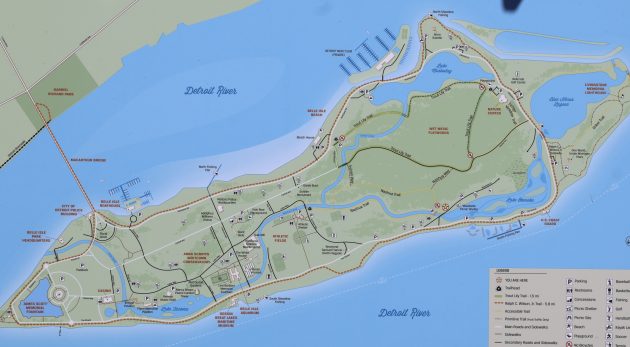 Photo of a display map on Belle Isle Park
Photo of a display map on Belle Isle ParkSome years ago a birding acquaintance gave an excellent presentation on urban birding to a local Audubon group. He was famous for his postings of wayward thrushes, warblers and sparrows that he found hoping around the buildings and other green spaces in downtown Detroit—especially during fall migration. He would frequently post late date records of one bird or another found lingering into the early days of winter. I would occasionally meet Karl—of urban birding fame—on Belle Isle when we were both out birding and we would inquire of each other what had been seen.
Over the years I have found many good birds on Belle Isle. Probably the best of which was an American Bittern casually walking along the shoreline of Lake Okonoka early one migration count morning in May. (Did I get a photo? Of course, not a good one, but good enough). I have found Yellow-breasted Chat, Northern Shrike and a very late Common Yellowthroat on a December Christmas bird count. One Sunday morning in May, pushing toward the end of spring migration, I counted 23 neotropical warbler species. This did not include the flycatchers, grosbeaks, tanagers, orioles and buntings also seen that morning. This kind of windfall is very rare now, but just the one experience make it unforgettable. There is a nesting Bald Eagle pair, and each spring brings a nesting Osprey pair who choose one of the baseball field’s light fixtures to build their nest—a preferred nesting spot for Ospreys in this area probably because the height feels right for them. The above mentioned birds are, by no means, an exhaustive list.
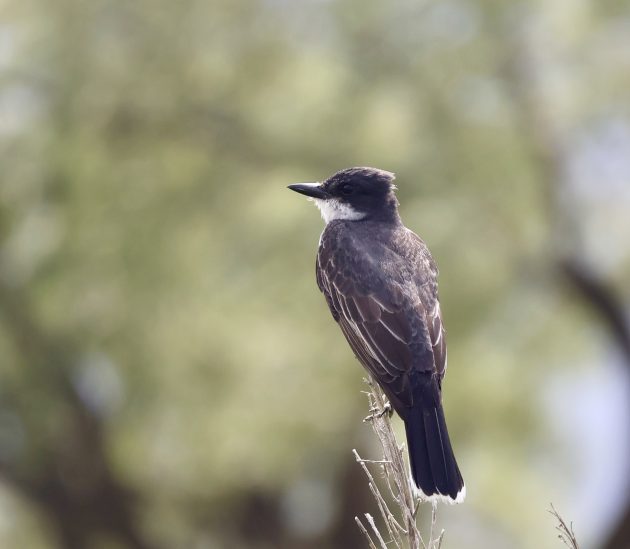 Eastern Kingbird (Tyrannus tyrannus), a very handsome flycatcher with a delightful flight style and unmistakable vocalization. This photo was taken this past July while I was looking for dragonflies.
Eastern Kingbird (Tyrannus tyrannus), a very handsome flycatcher with a delightful flight style and unmistakable vocalization. This photo was taken this past July while I was looking for dragonflies.Away from home, probably my favorite place for urban birding is the city of Chicago along the south shore of Lake Michigan. Incidentally, Lake Michigan is the only Great Lake that does not touch Canada. When attending a conference in Chicago, I would check into the hotel, unpack my bins and camera, run out to the Loop and ride the red line beyond Wrigley Stadium to an elevated stop (now cannot recall the name) and from there walk/run to the Magic Hedge—Chicago’s migratory hot spot located in Lincoln Park and the Montrose Point Bird Sanctuary. After birding the hedge, I would then explore the lagoons and beaches while slowly making my way back to the hotel. Of course, Chicago is famous for many things; but related to birding this includes two well-known events—one good and one bad. Two Piping Plovers, named Monty and Rose by those who found and monitored the plovers and their nesting success, met up each year, mated and raised a brood on Montrose Beach from 2019 until their deaths in 2022. In the summertime, Montrose Beach is a very popular beach destination and the Piping Plovers nested amongst the beach goers. Even though their population is increasing, Piping Plovers are listed under the endangered species act as near threatened. Somehow, the city of Chicago birders found a way for humans and the Piping Plovers to exist together. Now one of Monty’s and Rose’s offspring returns each year to mate and nest.
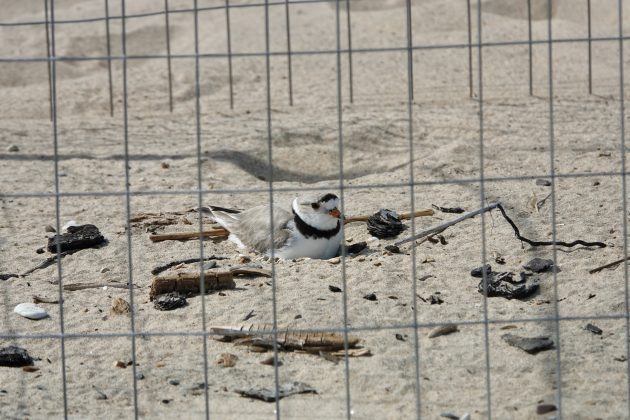 Piping Plover (Charadrius melodus). No, this is not Monty or Rose on their nest. But they would have had a similar enclosure on Montrose Beach. This kind of enclosure also protects the birds from preying Merlins! This photo was taken in June 2024 at Tawas Point State Park beach on the western shore of Michigan’s Lake Huron. (The eastern shore of Lake Huron is along Ontario’s Bruce Peninsula.)
Piping Plover (Charadrius melodus). No, this is not Monty or Rose on their nest. But they would have had a similar enclosure on Montrose Beach. This kind of enclosure also protects the birds from preying Merlins! This photo was taken in June 2024 at Tawas Point State Park beach on the western shore of Michigan’s Lake Huron. (The eastern shore of Lake Huron is along Ontario’s Bruce Peninsula.)The other, we can say infamous, event occurred during fall migration when a confluence of circumstances on the night of October 4-5, 2023 came together to cause one of the worst single night bird window collision catastrophes. Migration radar imaging revealed enormous numbers of birds in the sky flying south over Lake Michigan. On landfall, the birds hit the McCormick Place Conference Center with its blazing lights. The next morning the devastation was revealed. At first the management of McCormick Place shrugged their shoulders and remained silent. When the coverage of the event persisted and became nationwide and even international, they realized that their let the furor pass strategy was not going to work. They have since installed bird friendly glass—at what I thought seemed to be a fairly modest cost—and bird strikes are now dramatically reduced. Presumably, during migration, the McCormick Center also turns off those dreadful lights.
I focused on the places I know and where I love to bird. I can say that, at one time or another, I have explored every part of the 982 acres of Belle Isle. Occasionally, when I have a block of time for birding, I think about going to some other place. There are plenty around. But, I usually end up at Belle Isle. This past winter I was a frequent visitor and it was here that my Three Ducks photos were taken. Last April I participated in an eBird challenge using Belle Isle as my birding location. I failed to make the cut, but that’s beside the point. I loved the birding and I experienced the rationale the eBird challenge was aiming for.
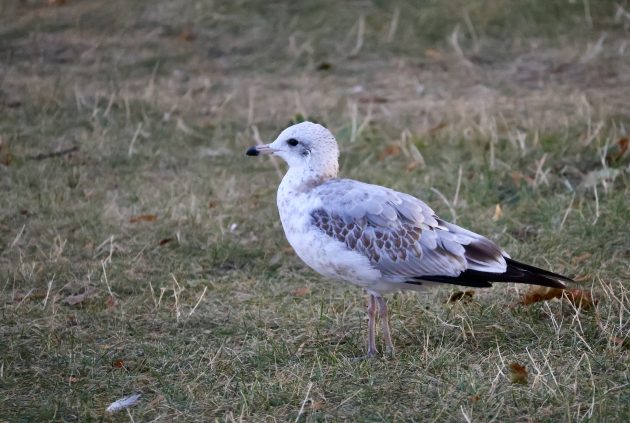 1st cycle Ring-billed Gull (Larus delawarensis), (Ayyash, pages 194-1951), surely the most common gull species in the U.S. Visitors to Belle Isle and large store parking lots would agree. Photo taken on an evening visit this past September.
1st cycle Ring-billed Gull (Larus delawarensis), (Ayyash, pages 194-1951), surely the most common gull species in the U.S. Visitors to Belle Isle and large store parking lots would agree. Photo taken on an evening visit this past September.If you are able to travel for work or pleasure, you will find great urban birding wherever you go. I don’t pretend to know all the spots, but I do have a general sense of the great urban birding cities. Undoubtedly, each have their own stories as I have offered here. Birders will never leave their binoculars at home, so there is nothing to worry about there. It’s an understatement to say that I am definitely an urban birding enthusiast.
Cover photo taken this past September from Sunset Point on Belle Isle: The Ambassador Bridge from Detroit, Michigan to Windsor, Ontario, Canada in the distance and with the freighter in the foreground, is the busiest international border crossing in the United States, handling a significant volume of both commercial and passenger traffic. It serves as a critical link for trade and travel between the U.S. and Canada.
1 The Gull Guide North America, Amar Ayyash, Princeton University Press, 2024.



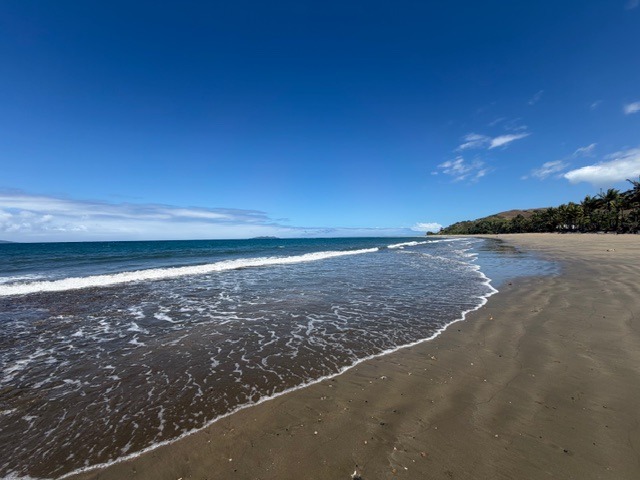


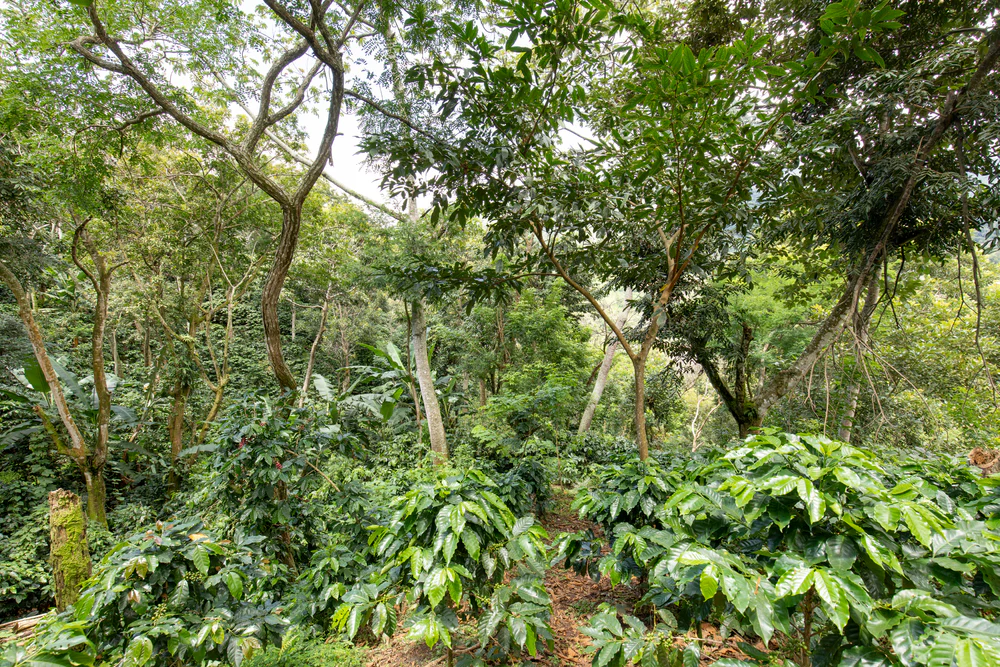

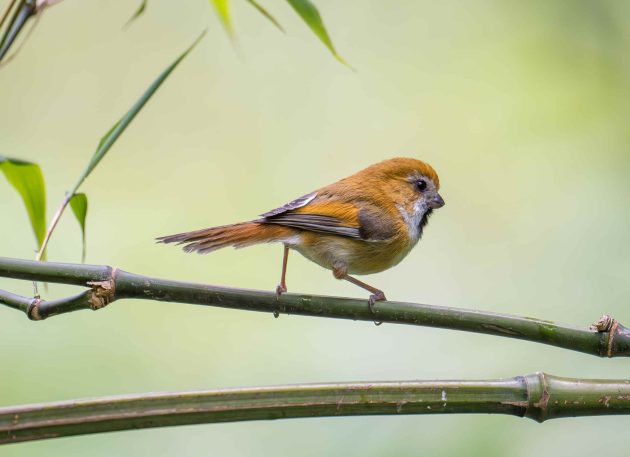














 English (US) ·
English (US) ·  French (CA) ·
French (CA) ·